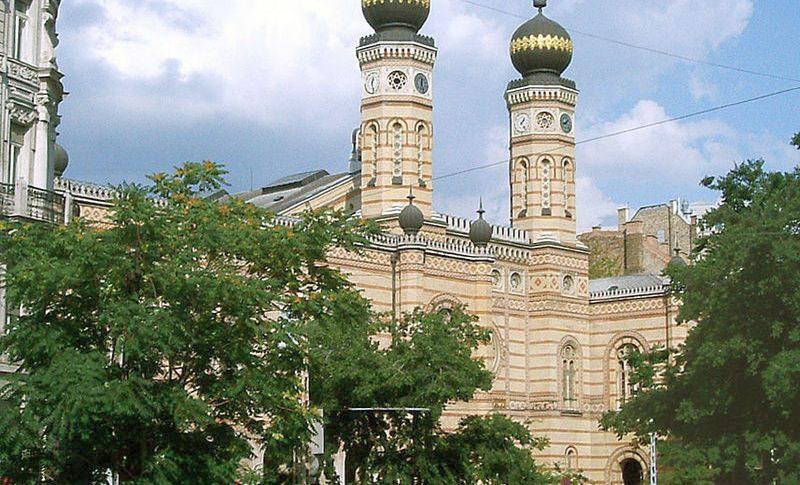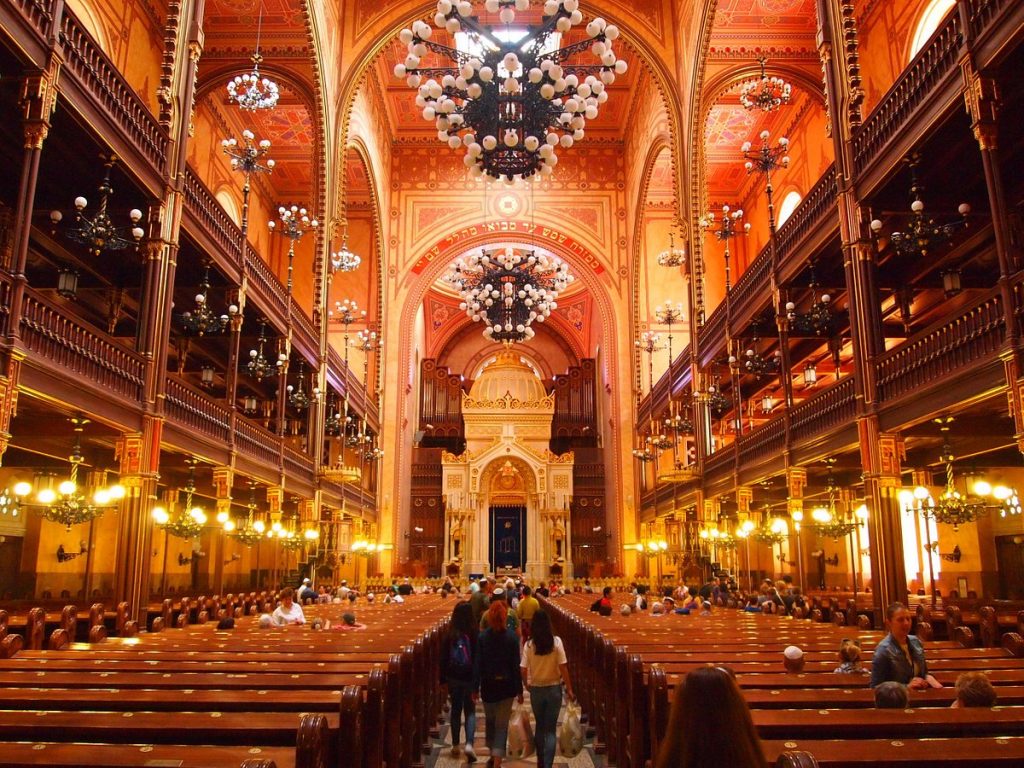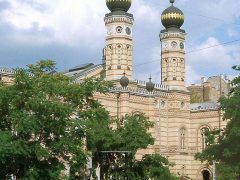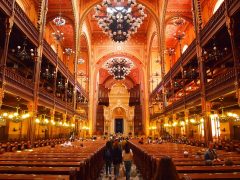Great Synagogue Budapest: Embrace the Legacy
A Beacon of Jewish Culture in Budapest
Budapest’s rich tapestry of cultures and histories includes a vibrant Jewish heritage, which shines brightly at the Dohány Street Synagogue. Standing as the second-largest synagogue in the world, it serves not just as a place of worship but also as a testament to the enduring spirit of the Jewish community in Hungary.
Architectural Marvel
Built in 1859, the synagogue showcases a stunning neo-Moorish architectural style. With a capacity to house 3,000 people, its grandeur of design and intricacies of decorations make it a must-visit for lovers of architecture and history alike.
More Than Just a House of Worship
Adjacent to the synagogue is the Hungarian Jewish Museum, which provides a deep dive into sacral heritage and the practices of Judaism. For a contemporary twist on Jewish art, one needn’t go far – the Síp 12 Gallery and Community Space offers an array of modern Jewish artworks and installations.
A Street with Stories to Tell
Located on Dohány Street, the synagogue stands at the historic gateway to Budapest’s Jewish Quarter. This very street marked the periphery of the Jewish ghetto during the dark days of World War II. Today, it remains a pulsating center of Jewish life, echoing tales of tragedies, triumphs, and enduring traditions.
Reviving a Landmark
Like many historical structures, the Dohány Street Synagogue underwent its phases of wear and tear. However, a three-year-long restoration project, largely funded by a generous $5 million donation from the globally renowned company Estée Lauder, brought it back to its former glory in 1996. This act of preservation was especially poignant given Estée Lauder’s Jewish and Hungarian roots.
Did you know about the Dohány Street Synagogue?
The Dohány Street Synagogue in Budapest, Hungary, is one of Europe’s most significant and iconic Jewish religious buildings. Here are some key facts about this synagogue:
- Architectural Grandeur: The Dohány Street Synagogue, also known as the Great Synagogue, is the largest synagogue in Europe and the second-largest in the world. It’s an outstanding example of Moorish Revival architecture, featuring a richly decorated façade, two large onion-shaped domes, and intricate interior designs.
- Historical Significance: Built between 1854 and 1859, the synagogue holds immense historical and cultural significance for the Jewish community in Budapest and Hungary. It’s not just a place of worship but also a symbol of the Jewish community’s historical presence and resilience.
- Location and Context: The synagogue is located in the Jewish Quarter of Budapest, on Dohány Street. This area was part of the Budapest Ghetto during World War II, adding to the site’s historical poignancy.
- Memorial and Museum: Within the synagogue complex, there’s the Jewish Museum, which houses artifacts and exhibits related to Hungarian Jewish history and culture. Additionally, there’s a Holocaust memorial, the Raoul Wallenberg Holocaust Memorial Park, located in the synagogue’s courtyard. The most notable feature of this memorial is the Emanuel Tree, a metal sculpture shaped like a weeping willow, with names of Holocaust victims inscribed on its leaves.
- Capacity and Interior Design: The synagogue can seat approximately 3,000 people. Its interior is lavishly decorated, featuring rich colors, gilded elements, and a beautifully ornamented ark where the Torah scrolls are kept.
- Cultural and Touristic Attraction: The Dohány Street Synagogue is a place of religious importance and a major cultural and touristic attraction in Budapest. Visitors are drawn to its architectural beauty, historical significance, and poignant memorial to the Holocaust victims.
- Restoration and Preservation: The building has undergone several restorations, most notably in the 1990s, to preserve its architectural integrity and historical significance. These efforts ensure the synagogue remains a testament to Jewish heritage and history.
- Community Role: The synagogue continues to play a vital role in Budapest’s Jewish community, serving as a center for worship, community events, and cultural activities.
The Dohány Street Synagogue symbolizes the Jewish community’s history, resilience, and continuing presence in Budapest. It is an essential site for understanding the city’s diverse cultural and historical tapestry.
Conclusion
The Dohány Street Synagogue is an architectural masterpiece and a beacon of Budapest’s rich Jewish culture and history. Visiting here is indispensable for anyone keen to understand the city’s multi-layered past.





